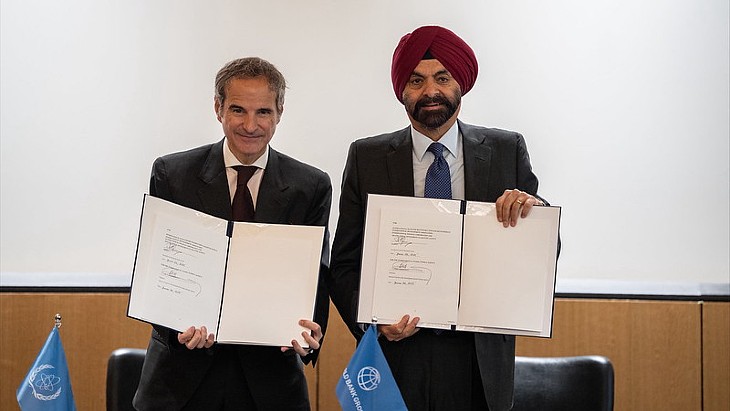Research focuses on submersible robots
Amphibious robots that can measure radiation levels underwater are to be developed through a joint project involving British and Japanese researchers. Such machines could help in clean-up and decommissioning activities at nuclear power facilities.
The two-and-a-half year project is being led by engineers at Lancaster University and involves the University of Manchester and Hybrid Instruments Limited. It also involves Japanese partners, including the Japan Atomic Energy Agency, the National Maritime Research Institute of Japan and the Nagaoka University of Technology. It is funded by the UK's Engineering and Physical Sciences Research Council.
According to a 13 January statement from Lancaster University, "When built, the technology will, for the first time, be able to assess radiation - particularly neutron and gamma-ray fields - under water to check the safety and stability of material within submerged areas Publishof nuclear sites."
Malcolm Joyce, professor of engineering at Lancaster University and lead author of the research, said, "Our research will focus on developing a remote-operated submersible vehicle with detection instruments that will be able to identify radioactive sources."
"A key challenge with the remote-operated vehicle will be to design it so that it can fit through the small access ports typically available in nuclear facilities," noted Barry Lennox, professor of applied control at the University of Manchester. "These ports can be less than 100mm in diameter, which will create significant challenges."
One possible application for the technology will be in the clean-up of the damaged reactors at the Fukushima Daiichi plant in Japan. Such a robot would be able to locate molten fuel within the reactors and assess its condition.
Joyce said, "A key task is the removal of the nuclear fuel from the reactors. Once this is removed and stored safely elsewhere, radiation levels fall significantly making the plant much safer, and cheaper, to decommission."
Another possible application could be in speeding up the removal of radioactive wastes from the ageing storage ponds at the UK's Sellafield site. This would not only shorten decommissioning programs but could potentially make significant savings for taxpayers.
There is potential for the resulting technology to also be used in the oil and gas sector for assessment of naturally-occurring radioactive materials in offshore fields.
Researched and written
by World Nuclear News
_77790.png)
_59102.jpg)
_49833.jpg)






..._58412.jpg)

